Why do Redwings prefer some berries in my garden over others?
Sophie Johnson
One study found that Redwings prefer Holly and Hawthorn berries, while another highlighted the importance of Rowan berries early in the winter, and whitebeam in some areas. Redwings have also been shown to detect fruit using ultraviolet vision. The waxy coating of some berries reflects UV light, and Redwings have shown a preference for these. Other factors, such as the timing of the berries or their size, can influence which are chosen. Some berries, such as Holly, may be more difficult for the birds to take earlier in the year and so might be left until they are riper.
Have you ever wondered how plants and fungi communicate?
The ‘wood wide web’ refers to the underground network of certain fungi and plant/tree roots. This incredible system allows resource sharing and exchange and even communication. For example, a fungus attached to a plant through this network can receive carbon from the plant, and in return the plant can get nutrients and improved access to water. Remarkably, plants that are being attacked can also alert others using chemical warnings through this network, warning them of potential threats.
See which of these fantastic fungi you can spot in the wild this autumn!
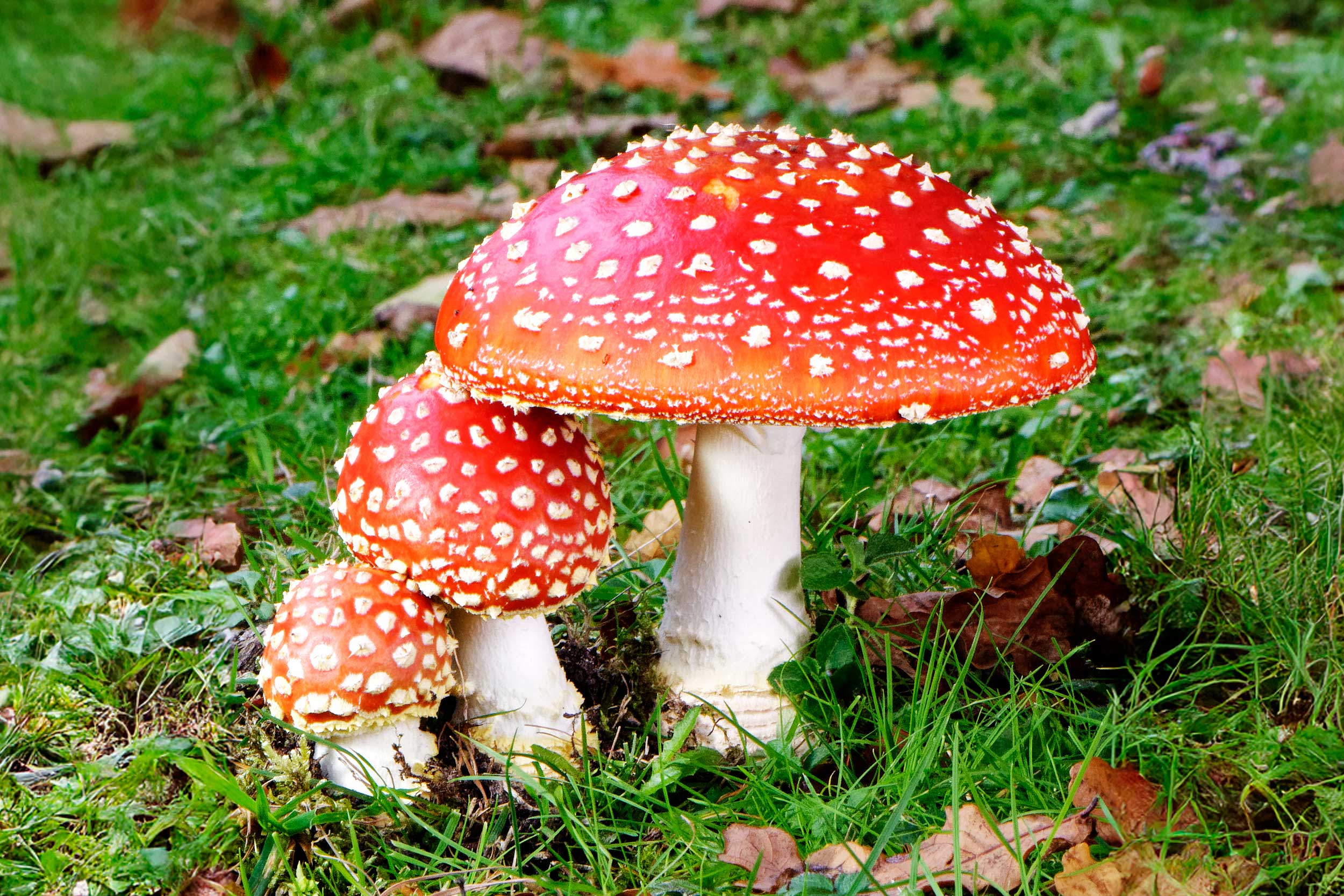
Fly Agaric mushroom. Photo: Nick Upton (rspb-images.com)
How to…
Start a compost heap
Compost heaps are a great way to turn waste material into rich compost to put back into your garden and help support your local woodlice, worms and toads.
Make a square structure from slatted wood (you can use upcycled wood or wooden pallets made from sustainable timber), and ensure one side is removable so you can access the compost when it’s ready.
Start filling it with a mix of green materials (grass clippings, weeds, and uncooked vegetable peelings) and brown materials (sticks, dried grass, wood chips, shredded paper and cardboard). Shred material where you can to help it break down more quickly, and water the heap in dry weather to keep it moist.
Over time, your compost will turn dark brown and crumbly, that’s when you know it’s ready to use.

Compost heaps are a great way to dispose of scraps. Photo: Piotr Malczyk (Alamy Stock Photo)
What species of swan is this?
Dawn Taylor
This brilliant photo shows one of our winter visiting swans. The Whooper Swan is one of the lovely swan species we have in the UK, along with Bewick’s and Mute Swan. Although they may look quite similar, there are some defining features to help you identify a Whooper. It has a pale-yellow bill that forms a triangular shape on either side with a smaller black triangular tip. Whoopers are the largest of the swan species here, with a long neck they typically hold upright, and black legs. These majestic birds arrive in the UK for the colder months, journeying all the way from Iceland, so you may be lucky enough to see one if you’re visiting a wetland this winter.
The Whooper Swan’s call is actually a distinctive honk.
Listen to the sound of a Whooper Swan
Matthias Feuersenger (xeno-canto)
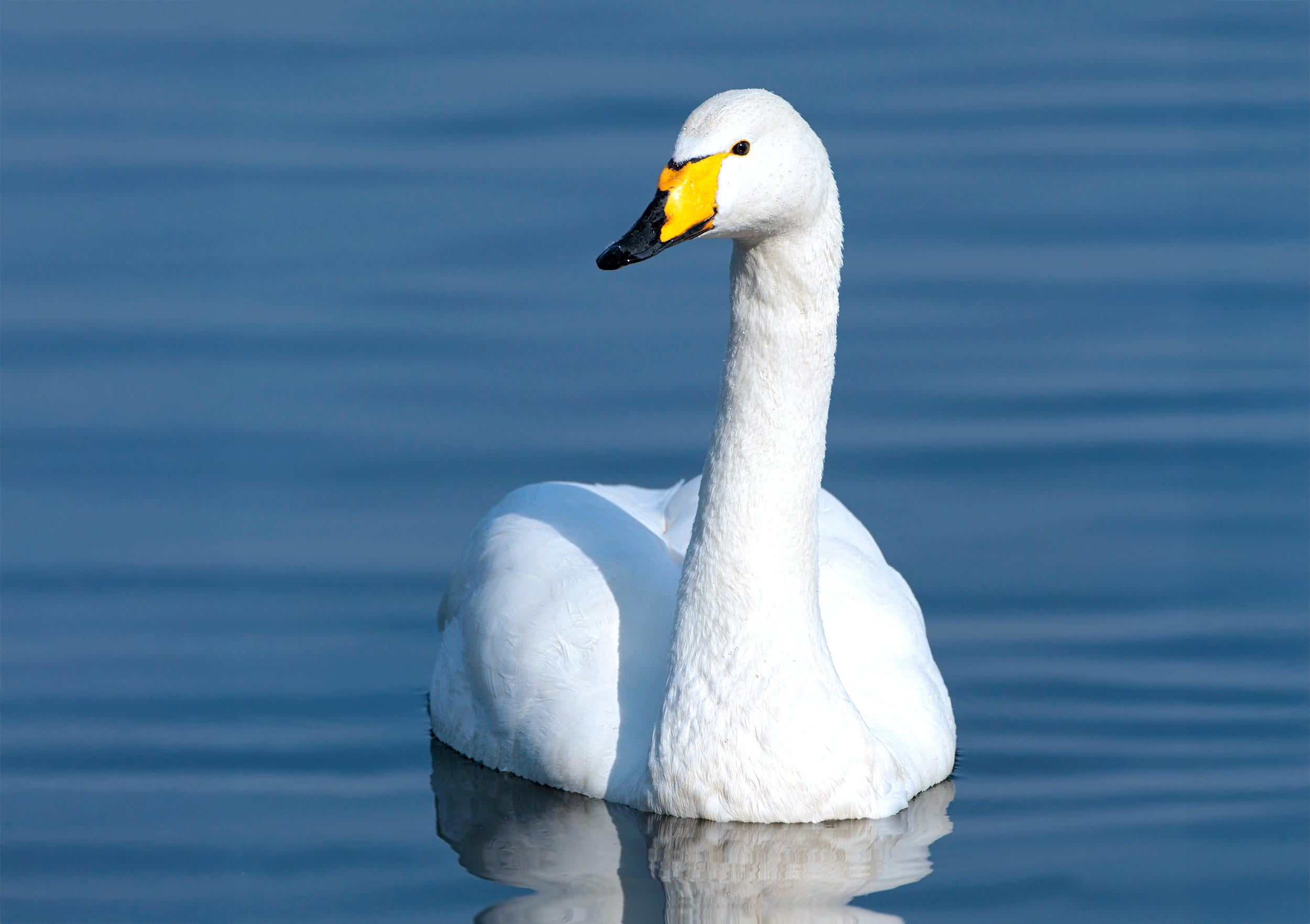
Whooper Swan. Photo: Steve Round (rspb-images.com)
I have seen a Hedgehog out during the day in my garden and heard about a new virus – is this the cause?
Alice Grayson
A Hedgehog out in broad daylight, especially in the cold winter months, can often be a sign of an injured or sick animal in need of help, but it’s not always cause for alarm. For example, pregnant or nursing females foraging for extra food, hungry youngsters, or Hedgehogs looking for a nest site may also be active during the day, particularly when the nights are short.
However, Hedgehogs do face a range of health issues and if one shows signs of illness, it’s wise to seek expert advice. A veterinary examination is needed to reach a diagnosis and guide any treatment, if required. The recently detected Hedgehog arterivirus has been linked to neurological disease outbreaks in Hedgehogs in care, but its occurrence and impact on free-living Hedgehogs remains unclear.
Please report any sightings of sickness or death in Hedgehogs to gardenwildlifehealth.org to help monitor their health and learn more about the various disease conditions that may be affecting them.
Discover how to build a cosy Hedgehog home to encourage them to rest, hibernate and raise their hoglets in your garden.

Hedgehog. Photo: Jules Cox (rspb-images.com)
Wigeon vs Pochard
These medium-sized ducks are found across the UK during the winter. The Wigeon is a dabbling duck, while the Pochard is a diving duck. Dabbling ducks feed near, or just under, the surface of the water. Diving ducks, on the other hand, are typically found in deeper water, where they dive down to search for food. These ID tips relate to adults in their winter plumage (males can look very different in eclipse plumage during the summer). Both ducks can be found in large flocks, outside of the breeding season.
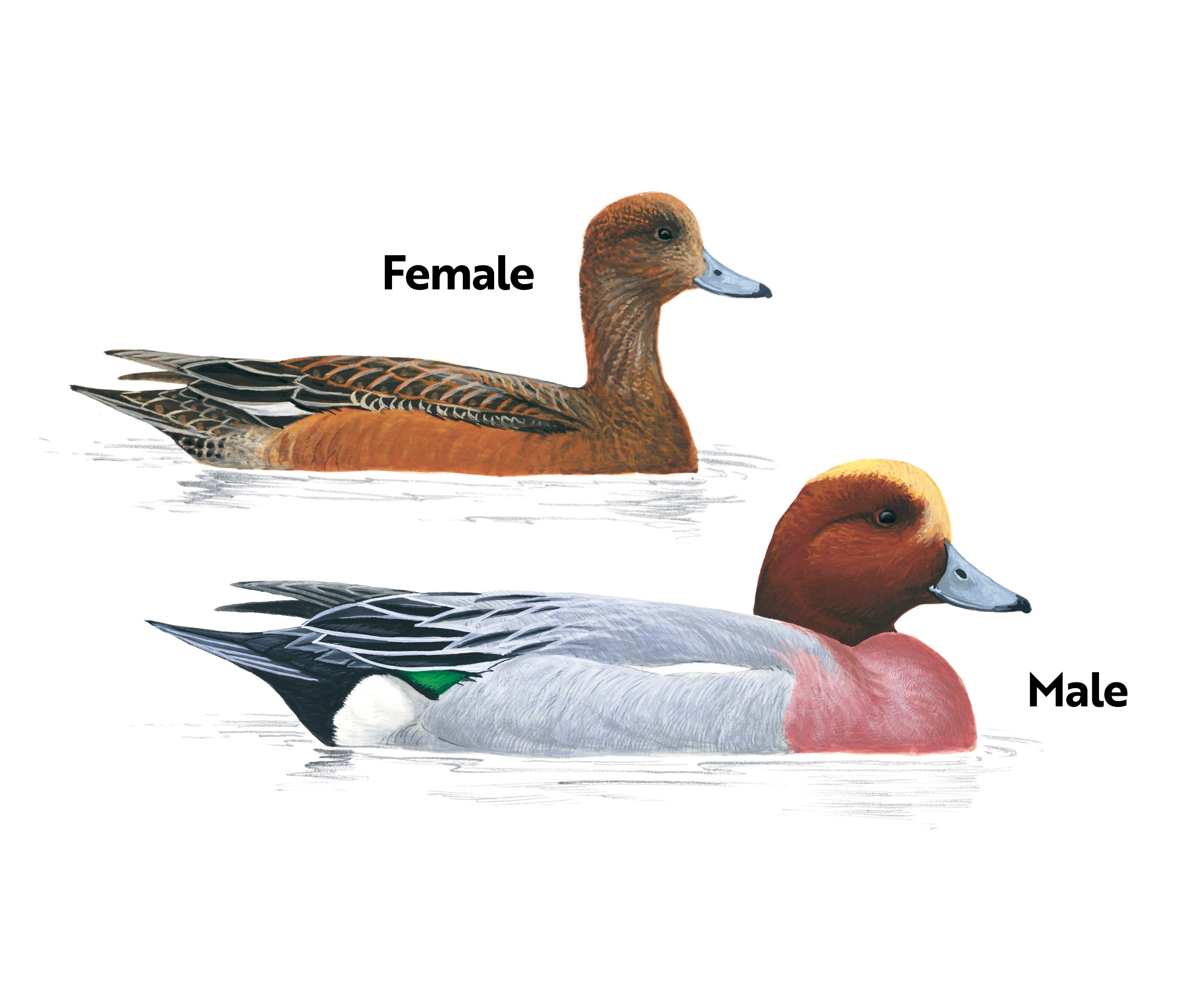
Wigeon. Illustration: Mike Langman (rspb-images.com)
Wigeon
- Rounded head with steep forehead
- Both male and females have a small, pale blue-grey bill with a black tip
- Males have a chestnut head and neck with yellow forehead, a pink breast, grey body and black tail
- Females and juveniles are mottled reddish or grey-brown
- Males display white wing patches in flight
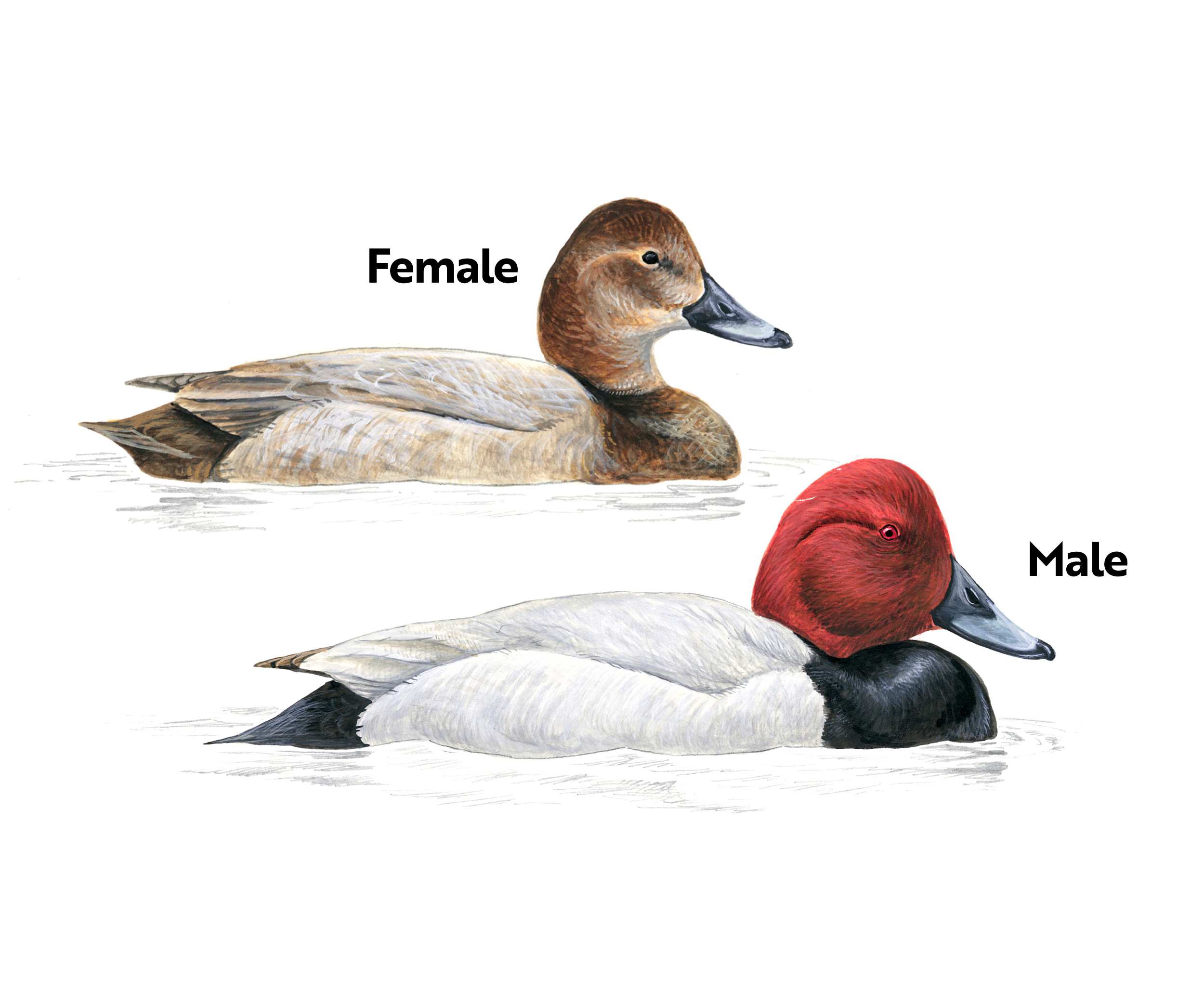
Pochard. Illustration: Mike Langman (rspb-images.com)
Pochard
- Blackish beak with pale grey band
- Males have bright red eyes, a chestnut head and neck, black breast and tail
- Females have a pale eye ring and line behind the eye and a dark patch below the eye
- Juveniles are similar to females

Send us your questions
From identifying a bird of prey to how to feed your feathered garden visitors, send your wildlife questions to the RSPB Wildlife team at YourQuestions@rspb.org.uk.
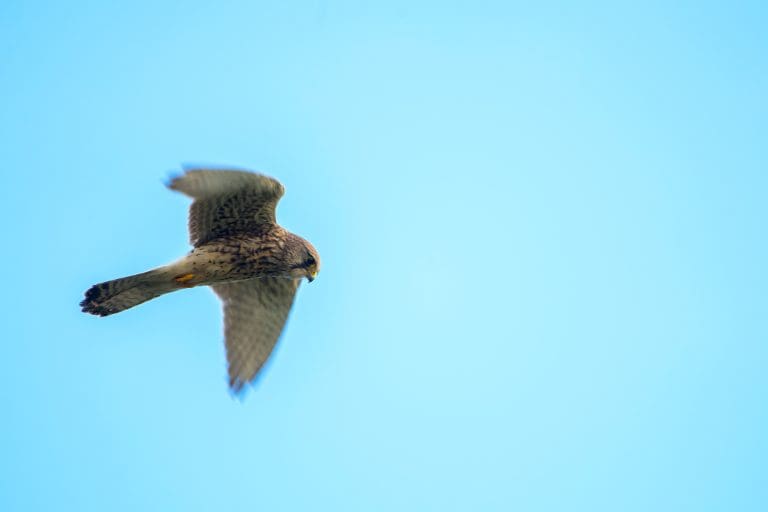
Kestrel. Photo: Ben Andrew (rspb-images.com)
You might also like
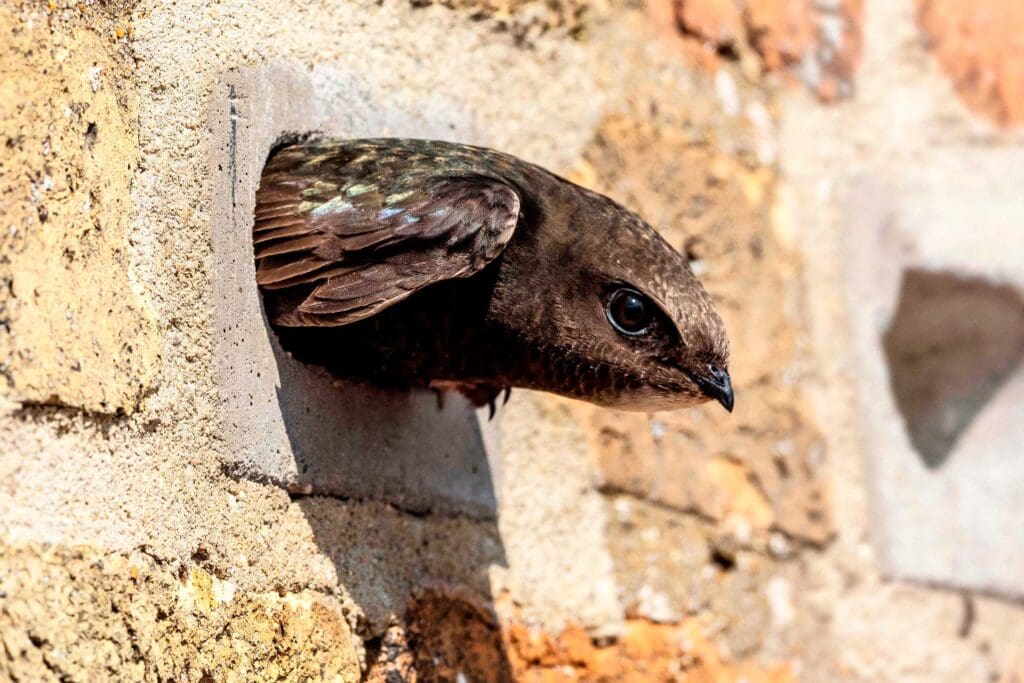
Building homes for nature
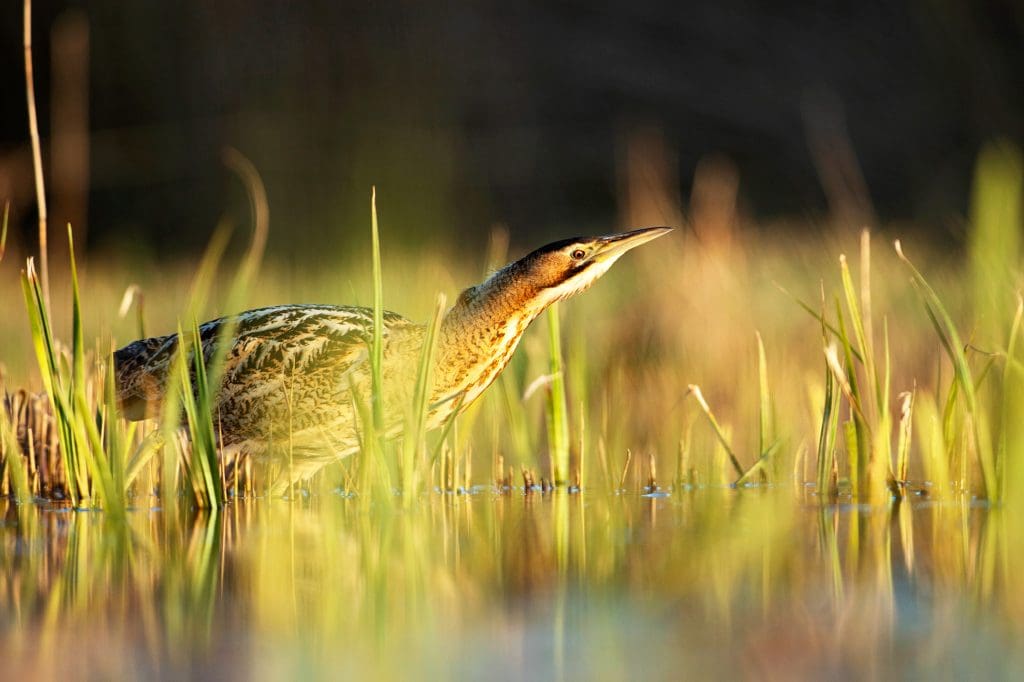
Answering your photography questions





